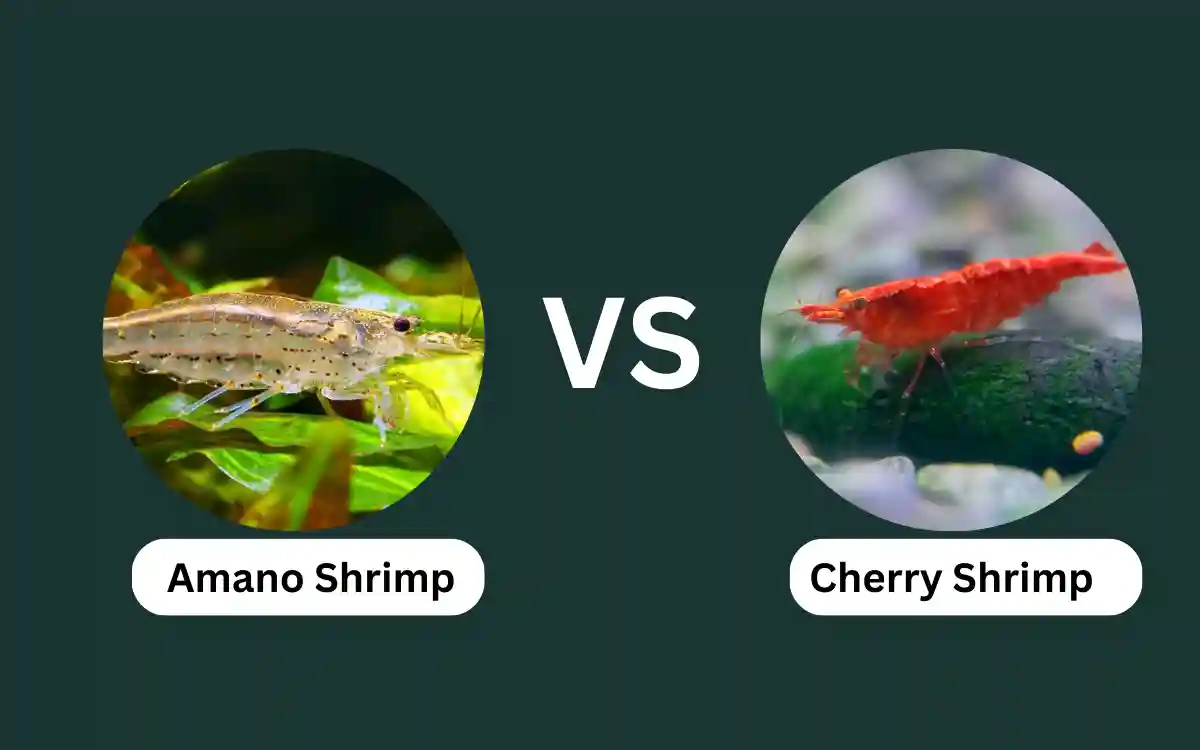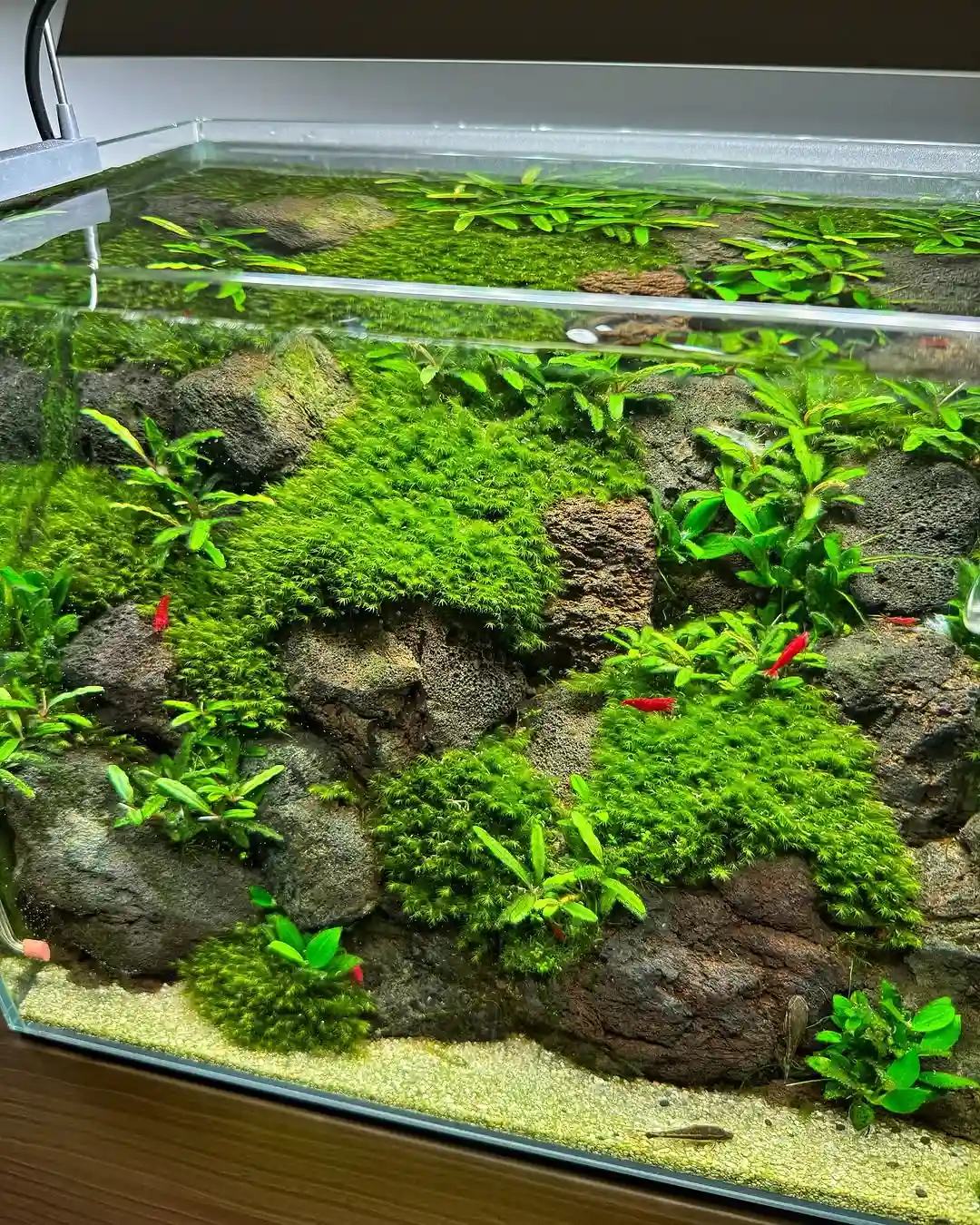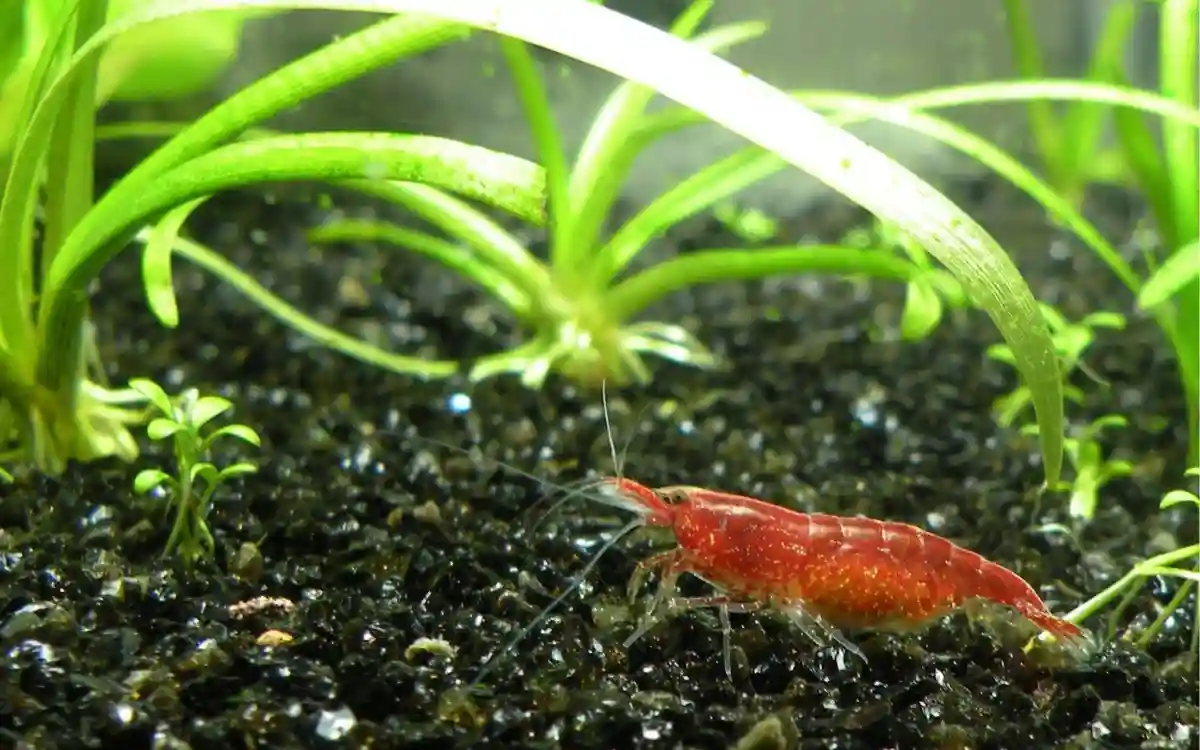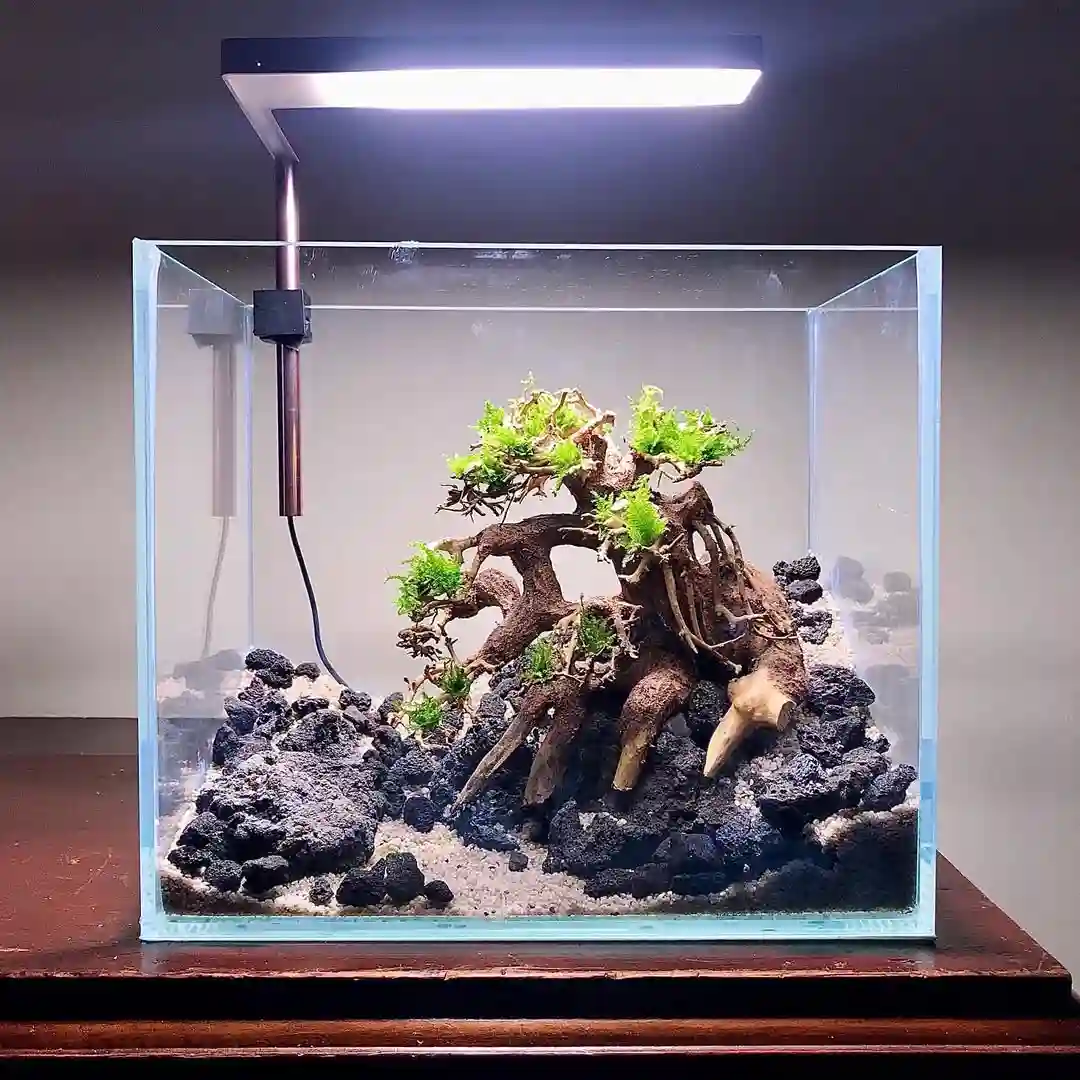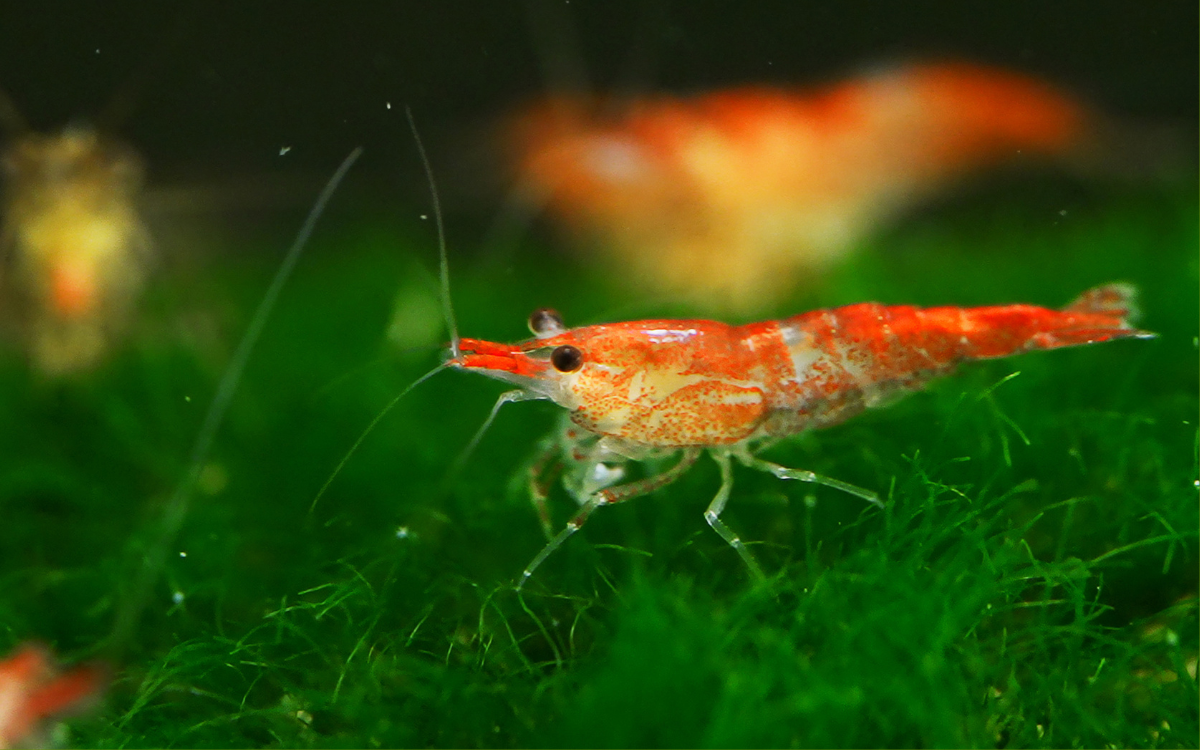Blue Velvet Shrimp Tank Setup: Everything You Need to Know
Setting up a tank for Blue Velvet Shrimp (Neocaridina davidi “Blue Velvet”) can be a rewarding experience for both beginners and experienced aquarists.
These vibrant blue creatures not only add stunning color to your aquarium but are also relatively easy to care for when you understand their needs.
Why Choose Blue Velvet Shrimp?
Blue Velvet Shrimp stand out in the aquarium hobby for several good reasons:
- Their Bright blue color creates a beautiful contrast against plants and dark substrates
- They’re peaceful community inhabitants that help clean your tank
- They breed easily in proper conditions, allowing you to expand your colony
- Their small size means they can thrive in modest-sized aquariums
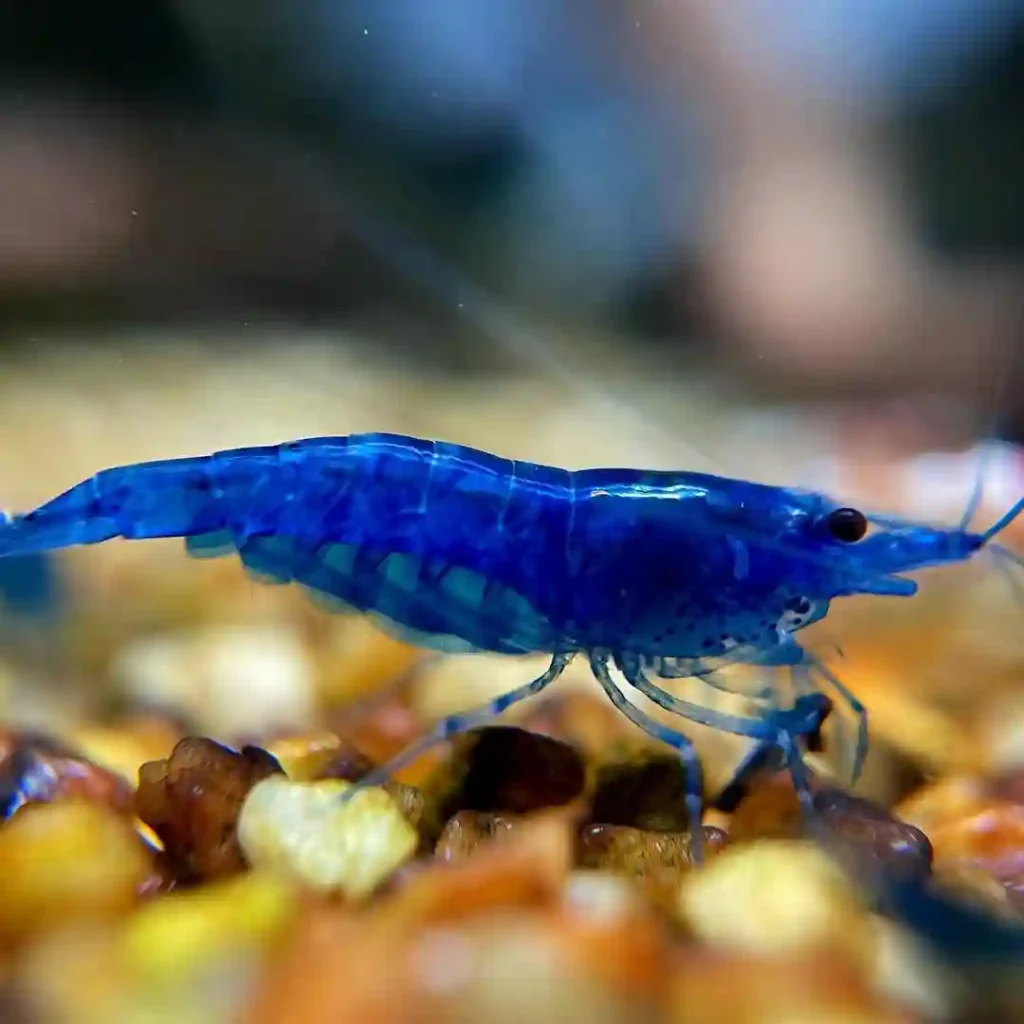
Tank Size and Basic Setup Requirements
A proper setup is essential for keeping your Blue Velvet Shrimp healthy and happy. While these shrimp are small, they need enough space to establish territories and find food.
For tank size, start with at least 5 gallons (19 liters), though 10 gallons (38 liters) provides better stability and more space for a growing colony. The extra water volume helps maintain consistent water parameters, which is crucial for shrimp health.
Your substrate choice matters significantly. Coarse black aquarium gravel works wonderfully as it shows off the shrimp’s blue color while preventing substrate compaction. Fine gravels or aquarium-safe sand also work well, especially darker colors that make the blue pop visually.
When it comes to filtration, gentle water movement is key. Sponge filters are ideal as they:
- Provide beneficial bacteria surfaces
- Create gentle water flow
- Prevent baby shrimp from being sucked into the mechanism
If using hang-on-back or canister filters, always cover intakes with a pre-filter sponge to protect your shrimp from being pulled in.
Creating the Perfect Water Conditions
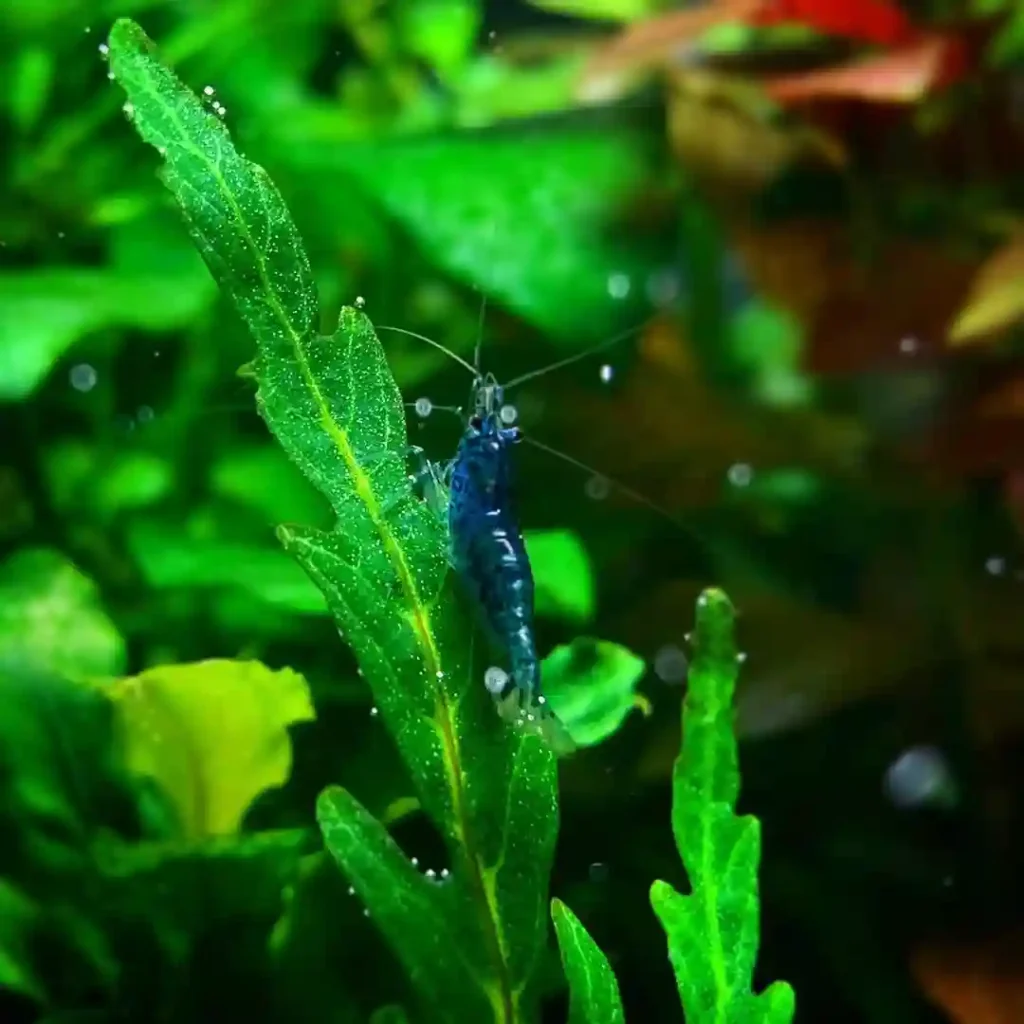
Blue Velvet Shrimp are somewhat adaptable, but they thrive best in specific water parameters. Maintaining stable conditions is more important than hitting exact numbers.
Temperature: Keep your tank between 65-85°F (18-29°C). Room temperature often works well, but a heater ensures consistency, especially during seasonal changes.
Water Chemistry: These parameters create an ideal environment:
- pH: 6.2-8.0
- General Hardness (GH): 4-8 degrees
- Carbonate Hardness (KH): 3-15 degrees
- Total Dissolved Solids (TDS): 150-250 ppm
Test your water regularly using quality test kits. Sudden changes in water parameters stress shrimp more than slightly off-target but stable conditions.
Aquascaping Your Shrimp Paradise
Creating an environment where your Blue Velvet Shrimp feel secure while still being visible requires thoughtful aquascaping. Plants and hardscape serve both functional and aesthetic purposes.
Essential Plants for Your Shrimp Tank
Live plants benefit your shrimp tank in multiple ways. They:
- Provide surfaces for beneficial biofilm growth (a natural food source)
- Create hiding places during vulnerable molting periods
- Help maintain water quality by absorbing excess nutrients
- Offer shelter for baby shrimp
Excellent plant choices include:
Java moss – Creates dense areas where shrimplets can hide Anubias varieties – Sturdy leaves provide resting spots Floating plants – Control light and provide security Marimo moss balls – Offer both foraging areas and aesthetic appeal
Hardscape Elements
Beyond plants, include:
Driftwood pieces that develop biofilm and provide climbing surfaces Small caves or ceramic shrimp tubes for security during molting Smooth stones arranged to create additional hiding spots
A well-designed tank provides a balance of open swimming areas and protected spaces. This encourages natural behaviors while letting you enjoy watching your shrimp.
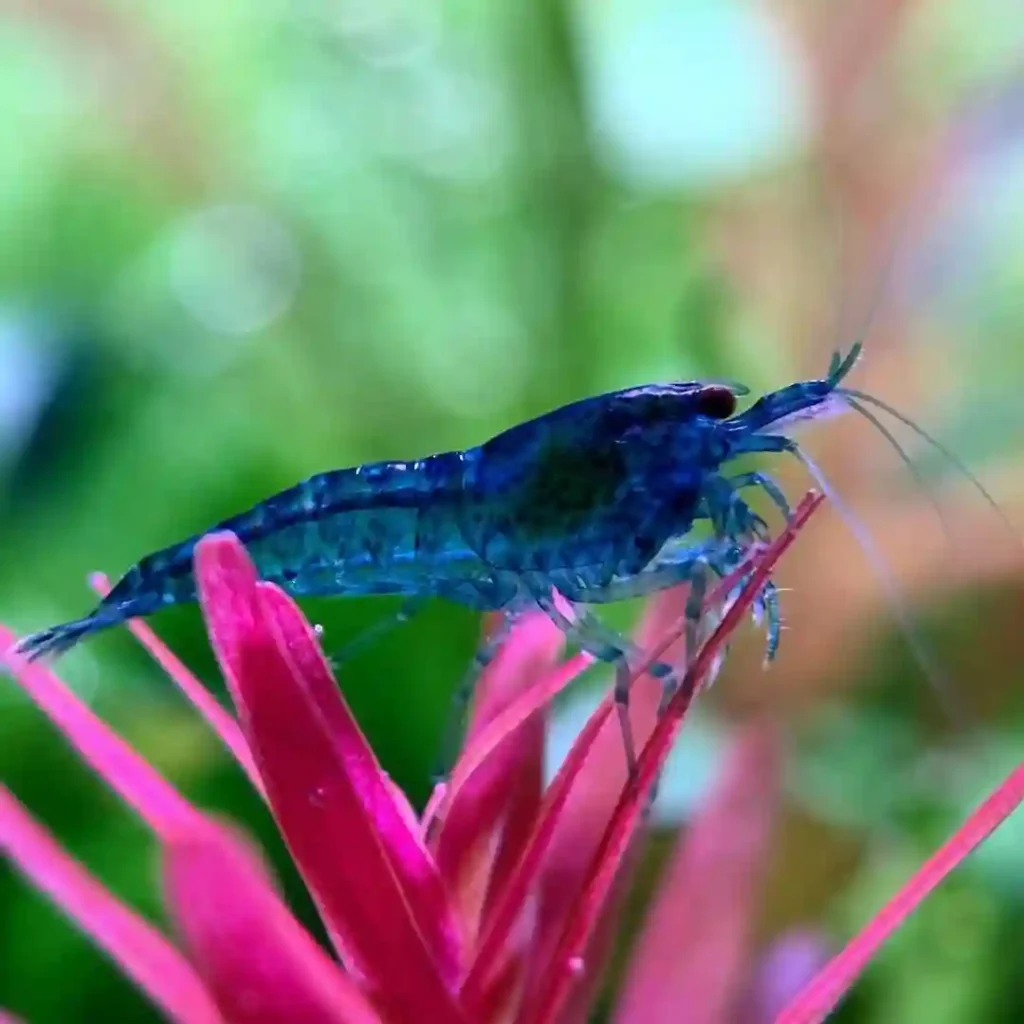
Feeding Your Blue Velvet Shrimp
Proper nutrition ensures vibrant colors and successful breeding. Blue Velvet Shrimp are not picky eaters, but they need variety in their diet.
These omnivores naturally graze on biofilm, algae, and microorganisms in your tank. However, in a home aquarium, supplemental feeding ensures they get complete nutrition.
A balanced feeding schedule might include:
Daily or every other day: Small amounts of quality shrimp-specific food or algae wafers
Weekly treats (rotate through these):
- Blanched vegetables (zucchini, spinach, kale)
- Boiled nettle leaves
- Occasional protein sources (small amounts of bloodworms)
Remember that overfeeding causes more problems than underfeeding. Remove uneaten food after a few hours to maintain water quality.
Choosing Tank Mates
While Blue Velvet Shrimp are peaceful, they can become easy meals for many fish. Choose tank mates carefully to ensure your shrimp colony thrives.
Compatible companions include: Small rasboras (Chili, Phoenix) Celestial Pearl Danios Otocinclus catfish Snails (Nerite, Mystery) Other Neocaridina varieties (though they may interbreed)
Avoid housing them with: Bettas (some are peaceful, many are not) Cichlids of any size Larger tetras Any fish large enough to eat a small shrimp
When in doubt, a species-only tank ensures your shrimp colony will flourish without predation stress.
Breeding Blue Velvet Shrimp
One exciting aspect of keeping these shrimp is watching your colony grow naturally. With proper care, breeding happens with little intervention.
Identifying males and females is straightforward. Females are larger (about 1.5 inches) with more intense coloration and a curved underside. Males are smaller (about 1 inch) with less vibrant color.
The breeding process follows these stages:
- Female molts, releasing pheromones
- Mating occurs shortly after molting
- Eggs appear under the female’s abdomen (“berried”)
- Eggs hatch after approximately 30 days
- Tiny shrimplets emerge as miniature versions of adults
To encourage breeding, maintain stable water parameters and provide plenty of plant cover for the young. Baby shrimp will feed on biofilm and microorganisms until large enough for regular foods.
Troubleshooting Common Issues
Even with careful setup, you might encounter challenges with your shrimp tank. Here are solutions to common problems:
Acclimation Problems
Proper acclimation is crucial. Use a drip method over 1-2 hours rather than floating bags. This allows shrimp to adjust to your water chemistry gradually, reducing shock.
Water Quality Concerns
Regular maintenance prevents most issues:
- Weekly 10-20% water changes using dechlorinated water
- Vacuuming only portions of the substrate to preserve biofilm
- Avoiding sudden parameter changes
Copper Toxicity
Shrimp are extremely sensitive to copper. Avoid:
- Medications containing copper
- Untreated tap water in areas with copper pipes
- Fertilizers not specifically labeled as invertebrate-safe
If you notice unusual behavior or deaths, test for copper and use appropriate water conditioners that bind heavy metals.
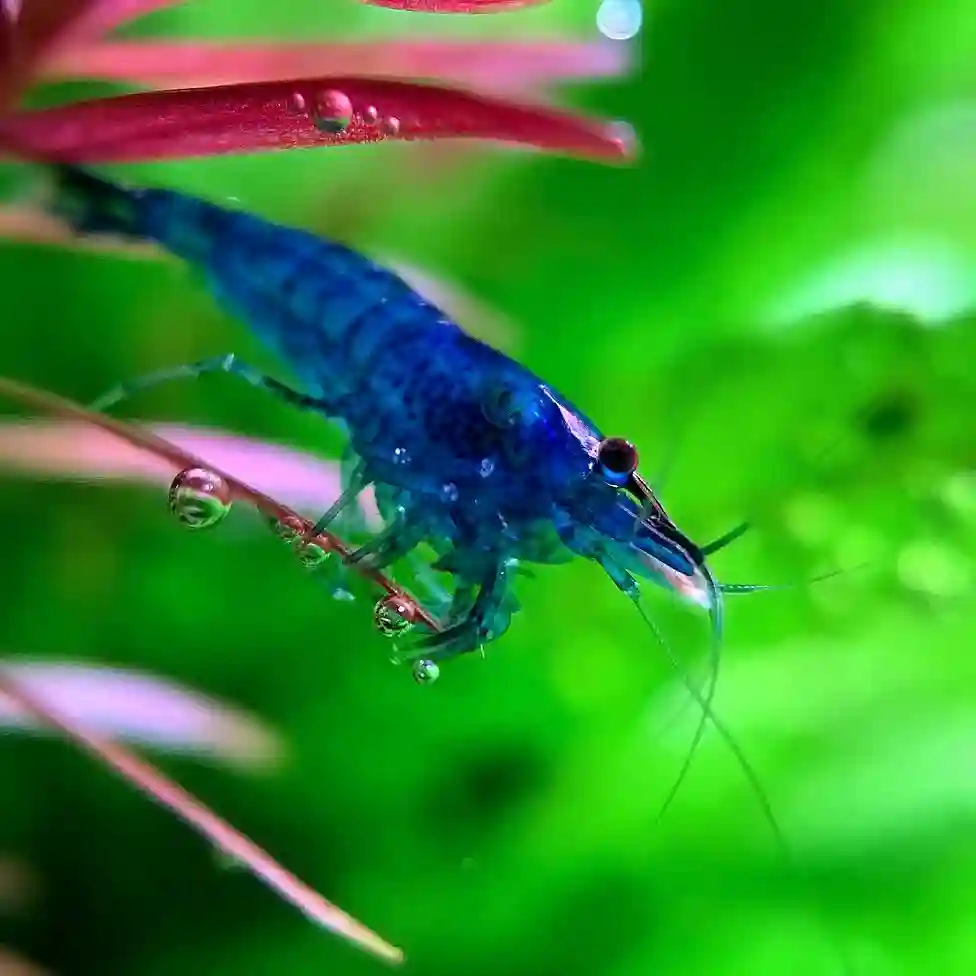
Setting Up Your First Blue Velvet Shrimp Tank: Step by Step
For new shrimp keepers, here’s a simple sequence to establish your tank:
- Set up tank with substrate, filter, and hardscape
- Add plants and fill with treated water
- Allow the tank to cycle completely (4-6 weeks until ammonia and nitrite read zero)
- Confirm suitable water parameters
- Acclimate shrimp slowly using a drip method
- Start with at least 10 shrimp for a healthy colony
- Feed sparingly and maintain consistent conditions
Conclusion
Blue Velvet Shrimp make wonderful additions to the home aquarium. Their striking appearance, helpful cleaning behaviors, and interesting activities provide endless enjoyment. By following this guide, you’ll create an environment where your shrimp can thrive, breed, and display their most vibrant colors.
Remember that patience and stability are key factors in shrimp-keeping success. Take time to set up your tank properly, maintain consistent conditions, and your Blue Velvet Shrimp colony will reward you with generations of these beautiful aquatic jewels.

